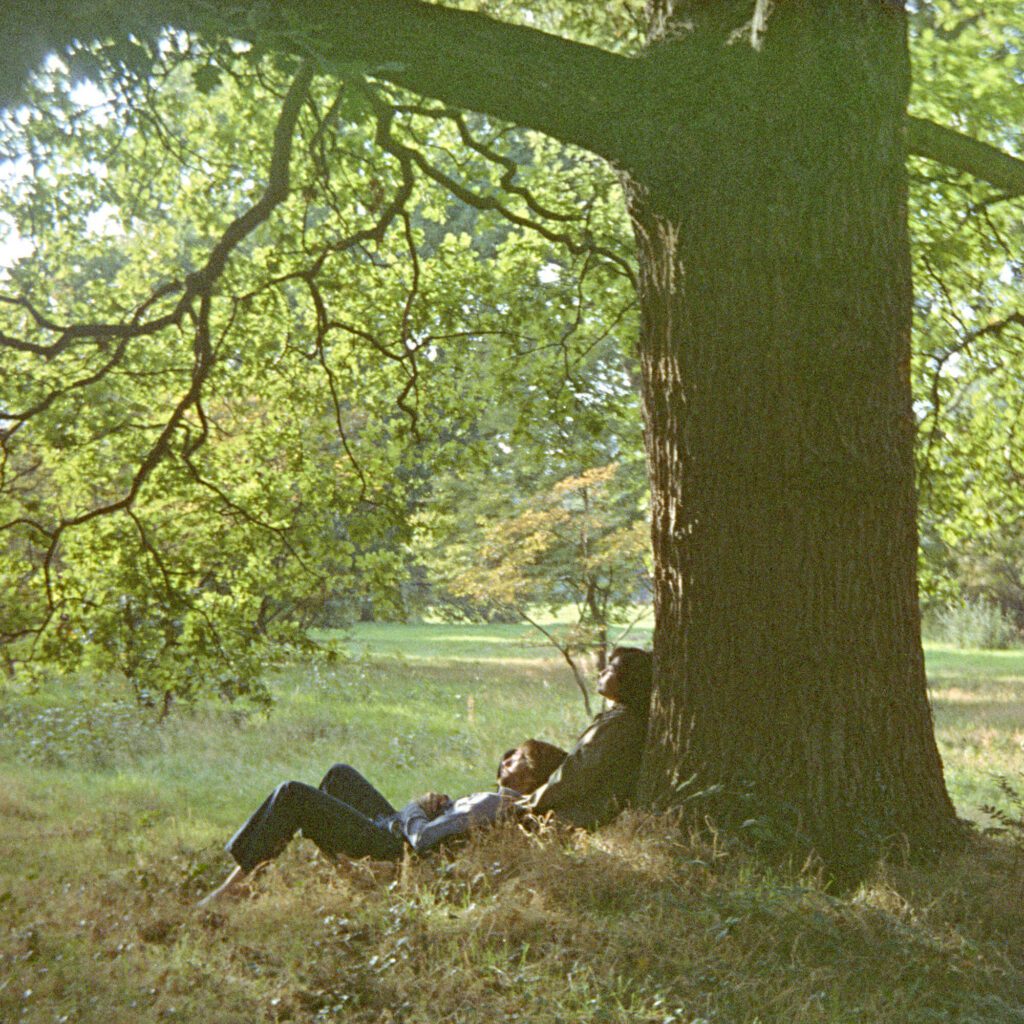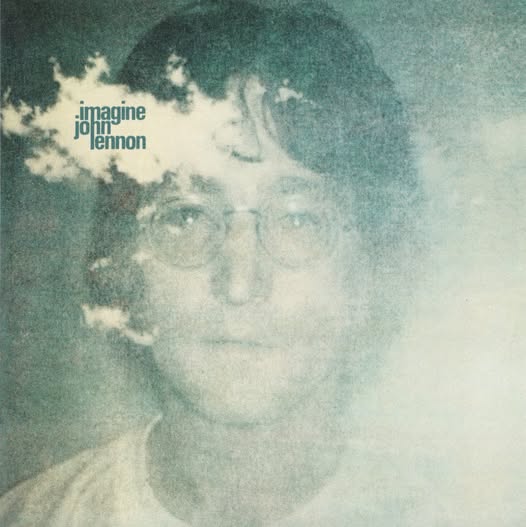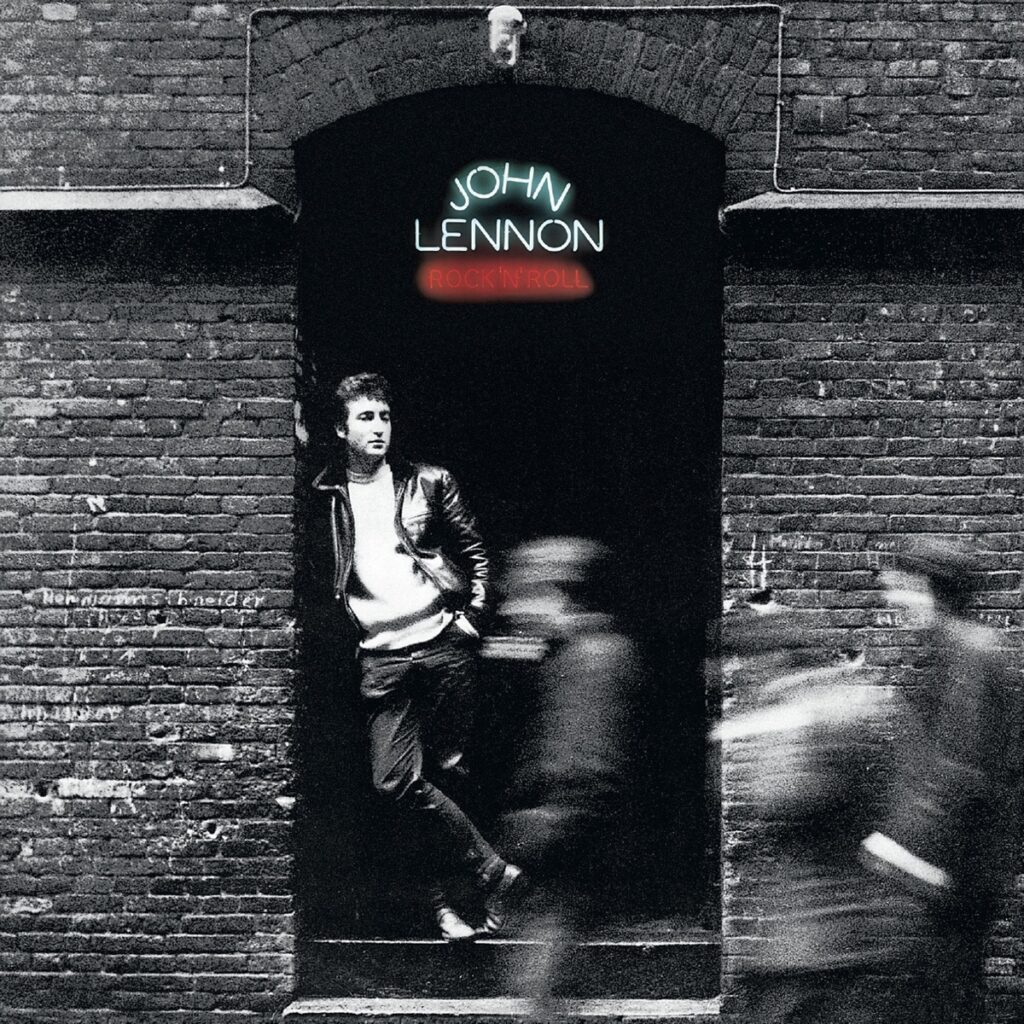
John Lennon was not only a musical genius but also a visionary when it came to the visual presentation of his work. His album covers were more than just packaging—they were statements, reflections of his personal and artistic journey, and, in many cases, pieces of art in their own right. From his early days with The Beatles to his solo career, Lennon’s album covers captured his evolving identity, his deep connection with Yoko Ono, and his message to the world.
In this article, we’ll explore the stories and artistic significance behind some of John Lennon’s most iconic album covers.

John Lennon/Plastic Ono Band (1970)
Lennon’s debut solo album, John Lennon/Plastic Ono Band, was a stark and raw statement, both musically and visually. The cover features a simple yet powerful image of Lennon lying against a tree with Yoko Ono resting on his body.
This peaceful, natural setting contrasts with the deeply emotional and intense music within the album, which was inspired by his primal scream therapy. The minimalist approach to the cover reflected Lennon’s desire to strip away all illusions and present himself as he truly was.

Imagine (1971)
Perhaps the most famous of all Lennon’s solo albums, Imagine featured an ethereal, soft-focus portrait of John Lennon on the cover. The artwork was designed to match the dreamlike, utopian vision of the title track.
The photograph, taken by Yoko Ono, reinforces the deeply personal nature of the album. Inside, the back cover featured another striking image—Lennon at his white grand piano, further cementing the connection between music, art, and simplicity.

Some Time in New York City (1972)
This album’s cover was one of the most politically charged in Lennon’s career. Designed to resemble a newspaper front page, it reflected the album’s protest songs and radical themes.
The cover featured headlines about war, feminism, and government oppression, with images of Lennon and Yoko Ono placed like figures in a revolutionary pamphlet. It was a bold and controversial move that underscored Lennon’s role as an activist as much as a musician.

Mind Games (1973)
Mind Games featured a surreal, dreamlike cover designed by Lennon himself. The artwork shows an enormous, godlike image of Lennon’s head floating over a barren landscape.
The cover matched the introspective and spiritual themes of the album, reflecting Lennon’s ongoing search for meaning and enlightenment. The cosmic, otherworldly visuals captured the essence of the music within—part reality, part fantasy.

Walls and Bridges (1974)
One of the most unique album covers in Lennon’s discography, Walls and Bridges featured childhood artwork drawn by Lennon himself at age 11. The sketch depicted a football player, reflecting his youthful dreams and artistic talent.
This nostalgic and personal touch gave the album an intimate feel, reminding fans that Lennon’s creativity extended beyond music. The cover also highlighted a different side of Lennon—a man reflecting on his past while navigating his turbulent present.

Rock ‘n’ Roll (1975)
For Rock ‘n’ Roll, Lennon paid tribute to his roots by using a vintage photo of himself as a young musician on the streets of Hamburg in the early 1960s. The black-and-white image captured the rebellious energy of his early days before The Beatles exploded into global fame.
This cover served as a perfect companion to the music—a collection of classic rock songs that had shaped Lennon’s own journey as an artist.

Double Fantasy (1980)
Lennon’s final album, Double Fantasy, was a deeply personal collaboration with Yoko Ono. The cover featured a simple yet powerful image of Lennon and Ono sharing an intimate kiss.
The black-and-white photograph, taken by Kishin Shinoyama, represented their love, unity, and artistic partnership. Tragically, just weeks after the album’s release, Lennon was killed, making this cover an everlasting symbol of his final chapter.
The Art Lives On
John Lennon’s album covers were not just promotional tools—they were visual extensions of his artistic vision. Each cover told a story, reflected a mood, or made a statement, much like the music inside.
His influence on album art continues today, proving that music and visuals are inseparable when it comes to creating a lasting legacy.

Celebrate Lennon’s Legacy
Let’s honour John Lennon’s music, art, and message through our exclusive collection of John Lennon Shirts. Whether you admire his visionary album covers or his timeless lyrics, our designs let you carry a piece of his legacy with you.
Explore our tee-shirt collection and find a design that connects you to Lennon’s creative spirit.
Conclusion
From stripped-down minimalism to bold political statements, John Lennon’s album covers were as influential as his music. They captured his journey—from his introspective early solo work to his final artistic expression with Yoko Ono.
These covers continue to inspire, reminding us that music is more than sound—it’s a visual and emotional experience that lasts forever.
For more on Lennon’s music and legacy, check out these sources:
